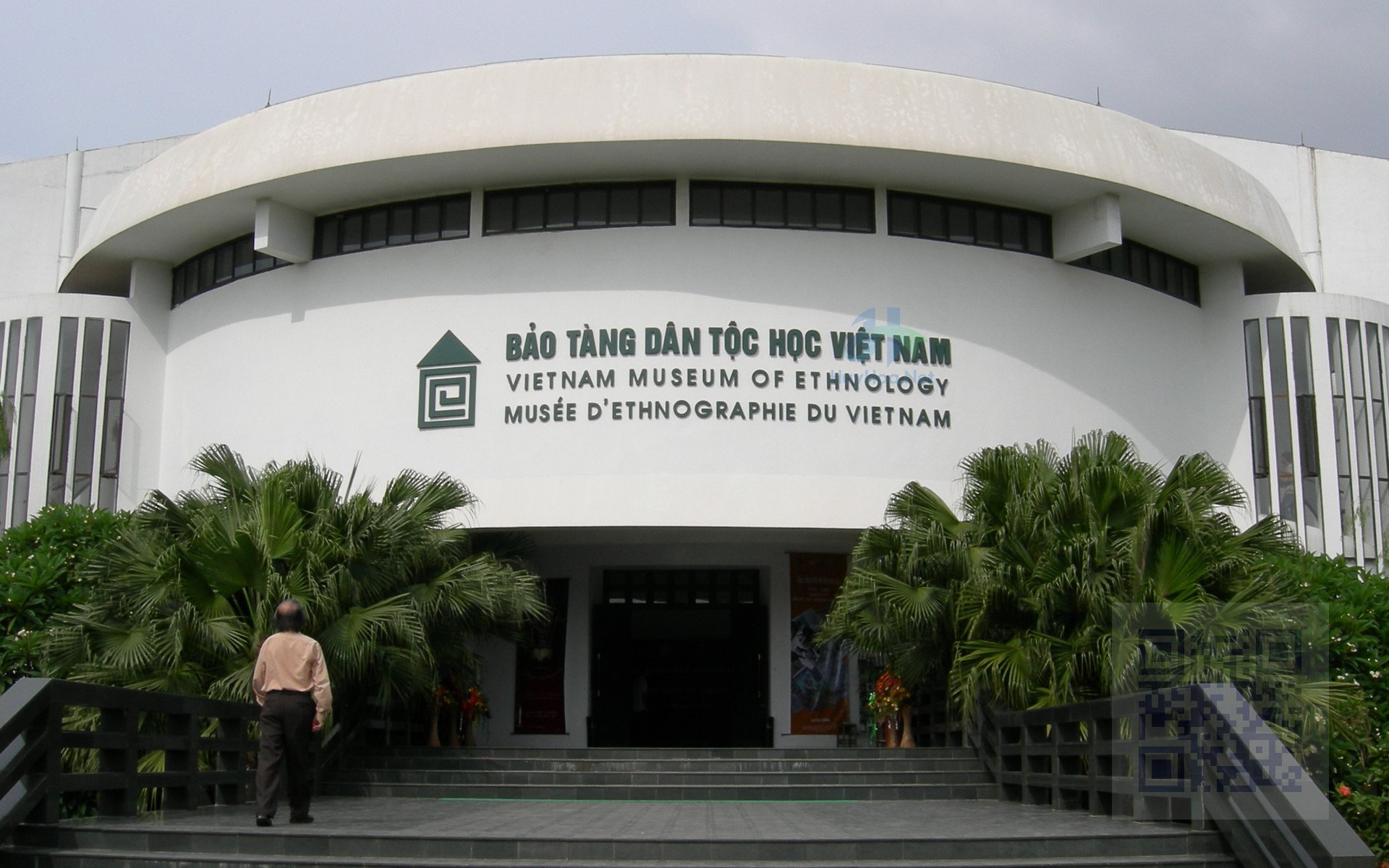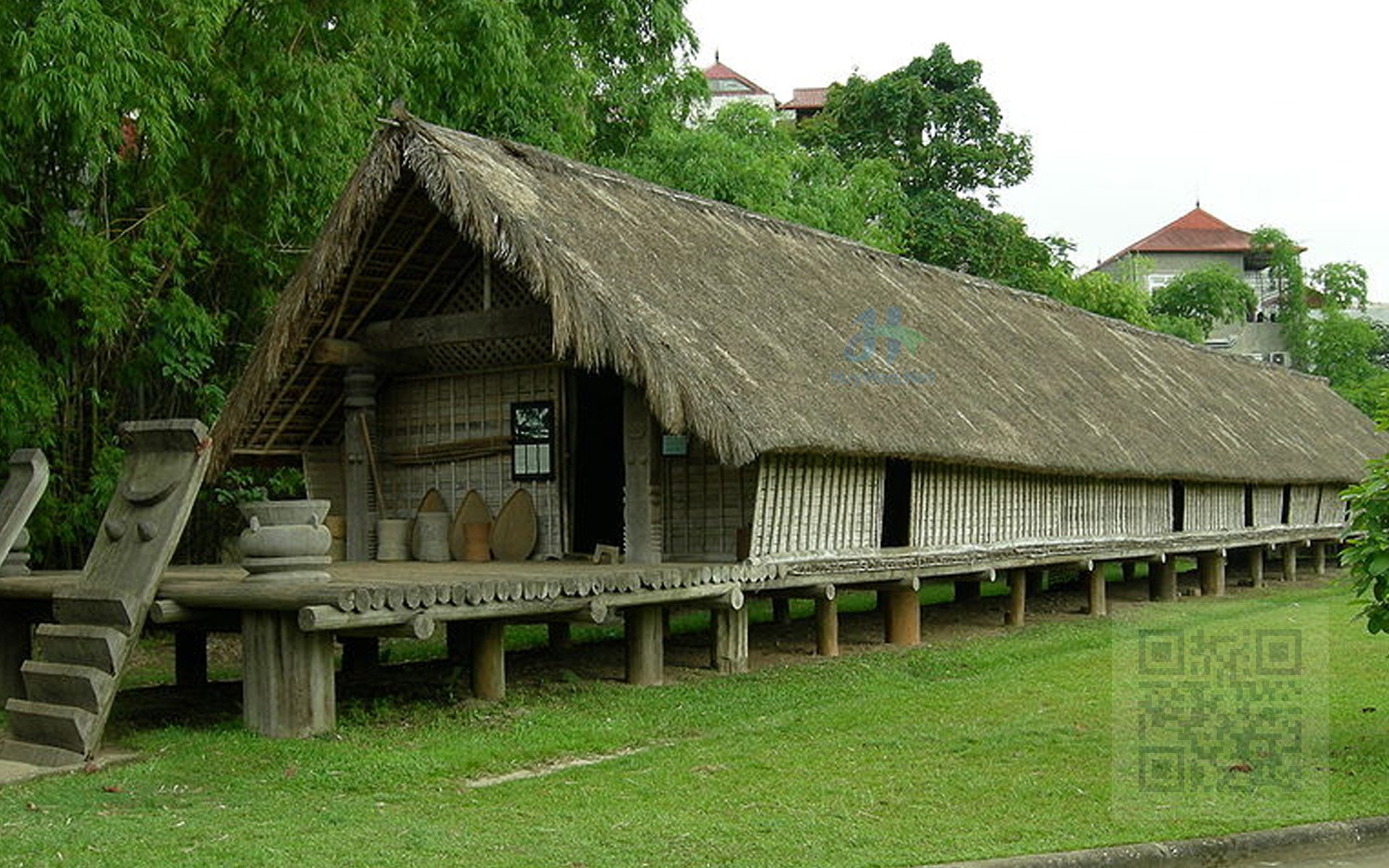If you are interested in learning about the culture and history of Vietnam, one of the best places to visit is the Vietnam Museum of Ethnology in Hanoi. This museum is dedicated to the 54 officially recognized ethnic groups in Vietnam, each with its own unique identity, language, and traditions.
The museum displays more than 30,000 objects, photos, and videos that illustrate the life and culture of these ethnic groups. You can also see their houses, gardens, and other structures in the open-air exhibition area. The museum also features exhibits from other Southeast Asian countries, highlighting the similarities and differences among these cultures.
The Vietnam Museum of Ethnology is not only a place to see, but also a place to do. You can join various activities such as playing games, making crafts, or watching performances.
You can also participate in workshops, events, or guided tours to enhance your experience. In this article, we will give you a comprehensive guide to the Vietnam Museum of Ethnology, including how to get there, what to see, and what to do at this cultural treasure in Hanoi.
Table of Contents
How to get to the Vietnam Museum of Ethnology?
The Vietnam Museum of Ethnology is located on Nguyen Van Huyen Street, Cau Giay District, about 8 km from the center of Hanoi. You can easily get there by taxi, bus, motorbike, or bicycle. The museum is open from 8:30 am to 5:30 pm every day except Mondays and New Year’s holidays. The entrance fee is 40,000 VND per person.
If you want to take a taxi, you can use a reputable company such as Mai Linh or Vinasun. The taxi fare from the Hanoi Old Quarter to the museum is about 150,000 VND to 200,000 VND.
If you want to take a bus, you can use bus number 34 from 22B Hai Bà Trưng Street, and get off at 10 Đào Tấn – Viện Vật Lý, then get on the bus 12 to “Công Viên Nghĩa Đô“. The bus fare is 7,000 VND per person. The bus runs every 15 minutes from 5 am to 9 pm.
If you want to take a motorbike or a bicycle, you can rent one from many shops in the Old Quarter or around Hoan Kiem Lake. The rental fee is about 100,000 VND to 150,000 VND per day for a motorbike and 30,000 VND to 50,000 VND per day for a bicycle.
You can follow the map or use a navigation app such as Google Maps to find the best route to the museum.
What to see at the Vietnam Museum of Ethnology?
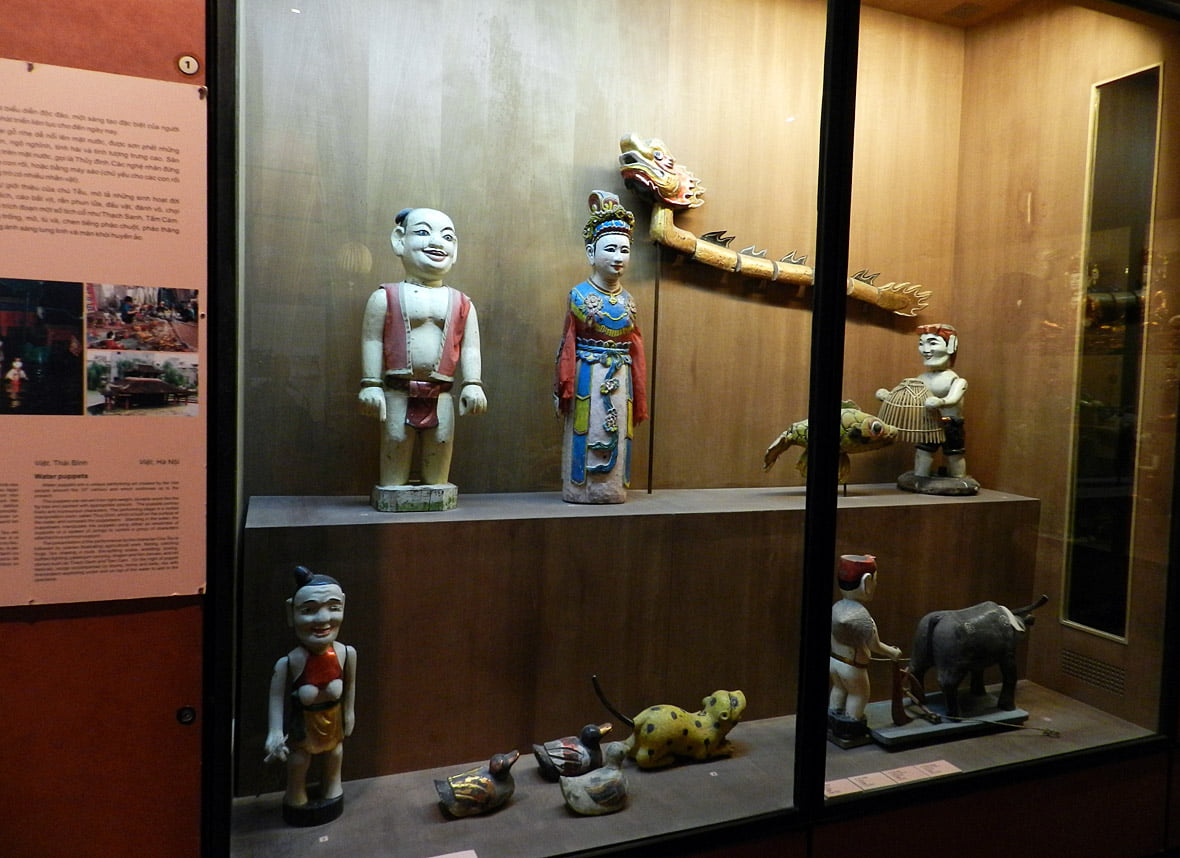
The museum consists of two exhibition buildings and an open-air exhibition area.
At the Vietnam Museum of Ethnology, you can see a variety of exhibits and activities that showcase the diversity and richness of the 54 ethnic groups in Vietnam.
You can also learn about the cultures of other Southeast Asian countries and their connections with Vietnam.
Here are some of the highlights of what to see at the museum:
- The main exhibition building is designed in the shape of a Dong Son drum, a symbol of Vietnamese culture. It displays more than 15,000 objects, photos, and videos that illustrate the life and culture of the 54 ethnic groups of Vietnam. You can see their costumes, jewelry, tools, musical instruments, religious artifacts, and more. You can also learn about their history, language, beliefs, festivals, and customs through interactive displays and multimedia presentations.
- The second exhibition building focuses on Southeast Asian ethnology, featuring exhibits from Indonesia, Malaysia, Thailand, Cambodia, Laos, Myanmar, and other countries in the region. You can explore the similarities and differences between these cultures and their connections with Vietnam.
- The open-air exhibition area showcases the architecture and environment of different ethnic groups. You can see their houses, gardens, ponds, and other structures that reflect their lifestyles and adaptations to nature. You can also join some activities such as playing traditional games, making crafts, or watching performances.

A traditional house from an ethnic group at the open-air exhibition area of the Vietnam Museum of Ethnology - The water puppet show is a special art performance that depicts stories in the daily life and activities of ethnic groups. The show is held on weekends at the museum’s theater or auditorium. You need to buy a separate ticket to watch the show.
What to do at the Vietnam Museum of Ethnology?
At the Vietnam Museum of Ethnology, you can do more than just see the exhibits. You can also join various activities that will enhance your experience and understanding of the cultures and lifestyles of different ethnic groups. Here are some of the things you can do at the museum:
- Join a guided tour or an audio tour to learn more about the exhibits and the stories behind them. You can choose from different languages and themes, such as Vietnamese culture, Southeast Asian culture, or children’s culture. The guided tours are free of charge and last for about an hour. The audio tours are available for rent at 10,000 VND per device.
- Watch a documentary film or a cultural show at the museum’s theater or auditorium. The documentary films are about various topics related to ethnology, such as festivals, rituals, crafts, or music. The cultural shows are performed by ethnic groups or artists from different regions of Vietnam, such as water puppetry, folk songs, dances, or musical instruments. The documentary films and cultural shows are free of charge and last for about 30 minutes.
- Visit the museum’s library or bookstore to find more resources or souvenirs related to ethnology. The library has a collection of books, journals, newspapers, maps, and audiovisual materials in different languages. You can read them on-site or borrow them with a membership card. The bookstore sells books, postcards, CDs, DVDs, handicrafts, and other items that reflect the cultural diversity of Vietnam and Southeast Asia.
- Enjoy a snack or a drink at the museum’s cafeteria or coffee shop. The cafeteria serves Vietnamese food and drinks at reasonable prices. You can also bring your own food and eat at the picnic area outside the museum. The coffee shop offers a variety of beverages and desserts in a cozy and relaxing atmosphere.
- Take part in some workshops or events organized by the museum or its partners. The workshops are designed to teach you some skills or knowledge related to ethnology, such as making pottery, weaving baskets, playing musical instruments, or learning ethnic languages. The events are held to celebrate some occasions or festivals related to ethnic groups, such as Tet (Vietnamese New Year), Mid-Autumn Festival, or International Museum Day
Tips and Guide
Located on Nguyen Van Huyen Street, the center of Hanoi, as long as 8 km, the Vietnam Museum of Ethnology increasingly attracting many tourists with activities and rich entertainment.
The space is open and beautiful scenery, including the Museum’s two main areas: the area inside and outside the architect Ha Duc Linh’s (ethnic Tay) design, and interior works by architect France undertook.
Here are kept about 15,000 artifacts, 42,000 movies (plus photos), hundreds of video tapes, cassette display many souvenirs reflecting all aspects of life activities, and habits of the 54 ethnic groups, reproducing successfully the religious activities typical of each ethnic …
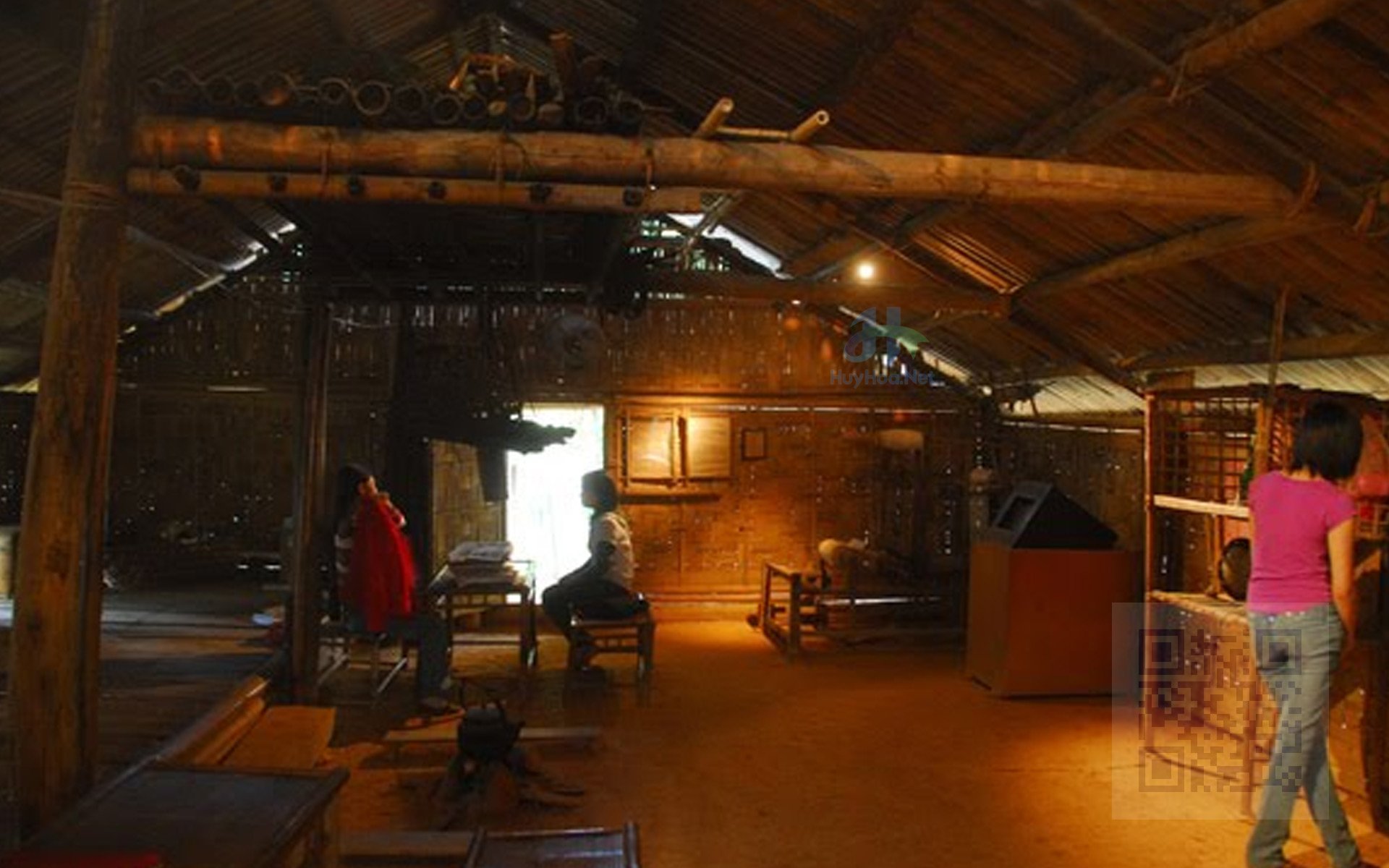
Here is not only a central store and display of precious cultural organizations but also a place for scientific research, collecting, classification, evaluation, preservation, restoration, display, introduction, stubs exploitation of historical value, and cultural and ethnological aspects of the ethnic groups.
Inner blocks, including displays, research facilities, library, and warehouse storage systems …
Exhibited in the portion occupied full two-story building has the appearance simulating the drums. Uninterrupted blocks of each other, each time display of each ethnicity shown in the display kind way to tell stories.
The story is linked closely, together with the group throughout the exhibit, the ever-changing attractions, meet different needs of the user. Each display is a great story that reflects the life of the colored cells of the Vietnam people.
Artifacts on display in the museum are very rich, from clothes, jewelry, supplies used in the daily activities of the people of the papoose, knives, and farm tools … Every kind of museum has subtitles that specify the name, origin, and materials for reference.
Spiritual activities, and religious beliefs, such as burial, and weddings are shown under the video size and attracted to lively, effect common knowledge very effectively.
The artifacts here are decorated simply and restrained so that viewers can experience the most acceptance, beauty, the subtle kind of a very average fantasy, real life.

You will be visiting the exhibit on display in the permanent exhibition, exhibition seminars, exhibition, and display area stored outdoors. Museum of Ethnology Vietnam is a picnic outdoor fun for families with children on the weekend.
An outdoor display area with the sample characteristics of each nation is really a focus for student learning, research students, as well as those who study and learn about the customs and practices of the nation.
Currently, the museum is building nine new pieces of architecture with a time of major exhibits such as the communal house of the Ba Na people, the length house on stilts of the Ede ethnic group, the walls of the Ha Nhi, the sepulcher of Gia Rai, the house with no upstairs of Cham, tile-roofed house of Viet, house on stilts of Tay…
Between the houses are the small paths winding streams, small bridges space,s and landscapes that are very close to the life of each ethnic Vietnam. Here, visitors not only visit but also entertainment research, and learn about the peoples, and cultures of every nation as well as traditional values shared by the peoples.
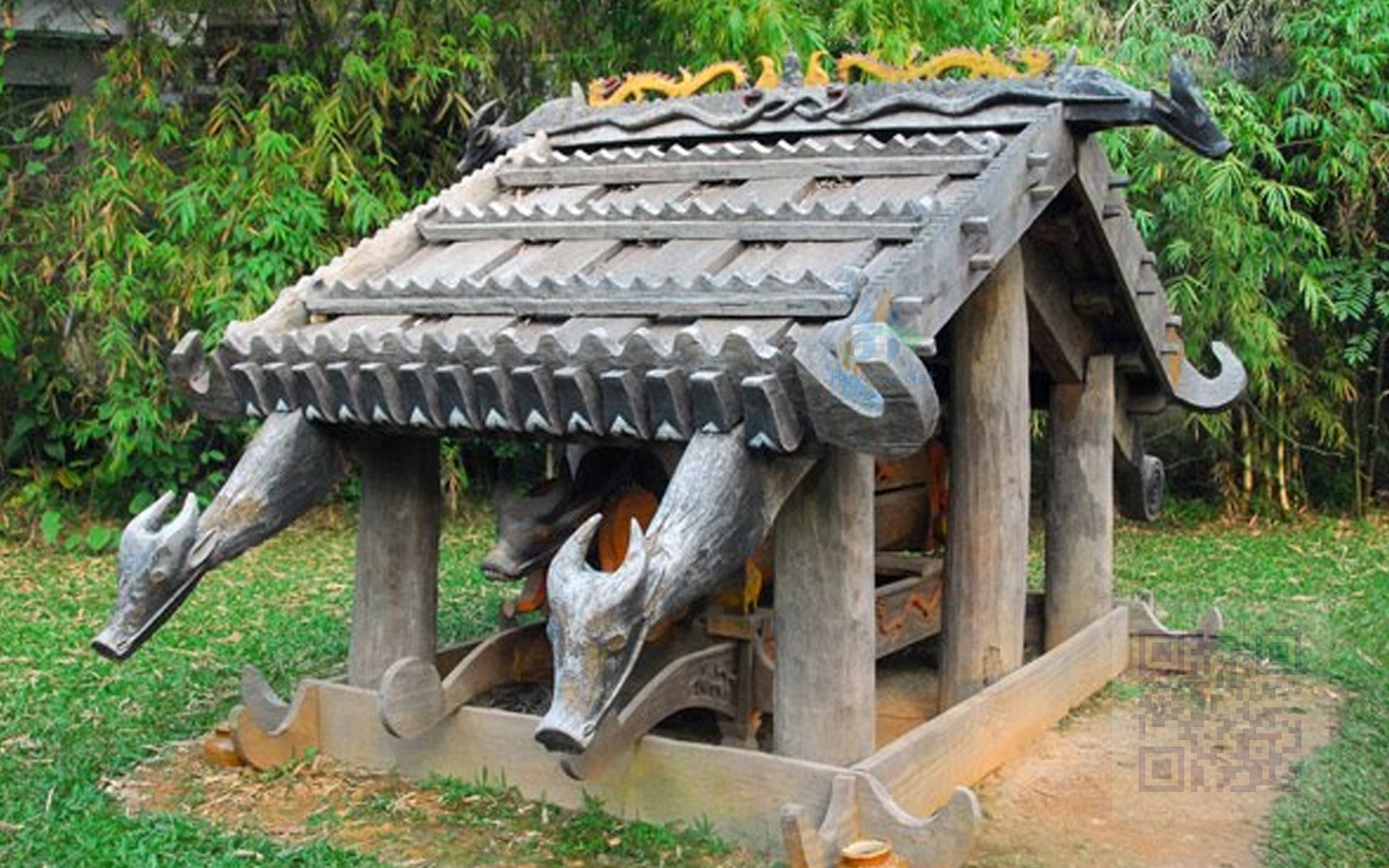
Special performances of its excellent puppet of the North region regularly occur here. Guests not only considered artists performing puppets but also communicating with them, being manually controlled puppets underwater very interesting. Craft classes and embroidered fabrics for students are regularly held in the summer just to help them entertainment medium can learn many basic skills in embroidery.
In addition, visitors will have the opportunity to visit and buy souvenirs at the booth: a publication, plates, and souvenirs at the main gate of the museum immediately.
The museum is open to welcome visitors every day of the week except Monday. Activities plentiful and diverse, the Ethnology Museum of Vietnam is an ideal place for tourists to rest, relax, and enjoy the arts and cultural discoveries of Vietnam. The museum is for weekends for the family.
The Vietnam Museum of Ethnology is a great place to discover the diversity and richness of Vietnam and its neighboring countries. It offers a unique and comprehensive insight into the cultures and lifestyles of different ethnic groups through its exhibits and activities.
Whether you are interested in history, art, or anthropology, you will find something to enjoy and learn at this museum. If you are planning a trip to Hanoi, don’t miss this opportunity to visit one of the best museums in Vietnam.
You can find more information about the Vietnam Museum of Ethnology on their official website: http://www.vme.org.vn/en
Frequently Asked Questions
What are the opening hours of the Vietnam Museum of Ethnology?
The opening hours of the Vietnam Museum of Ethnology are from 8:30 am to 5:30 pm every day except Mondays and New Year's holidays. The museum is located on Nguyen Van Huyen Street, Cau Giay District, about 8 km from the center of Hanoi.
How much does it cost to enter the Vietnam Museum of Ethnology?
The entrance fee to the Vietnam Museum of Ethnology is 40,000 VND (about $2 USD) per person for adults, and 15,000 VND (about $0.8 USD) per person for students, the elderly, and the disabled. You need to show your ID or student card to get the discounted price. The entrance fee includes access to all the exhibition areas, both indoors and outdoors.
Is the Vietnam Museum of Ethnology wheelchair accessible?
The Vietnam Museum of Ethnology is wheelchair accessible in most areas, except for some parts of the open-air exhibition area where the terrain is uneven or steep. The museum provides wheelchairs for free for visitors who need them. You can ask for a wheelchair at the ticket office or the information desk. The museum also has elevators and ramps to facilitate the movement of wheelchair users between floors and buildings. The museum staff are friendly and helpful and can assist you if you have any questions or problems.
What are the most popular exhibits at the Vietnam Museum of Ethnology?
The Vietnam Museum of Ethnology has many interesting and informative exhibits that showcase the diversity and richness of the 54 ethnic groups in Vietnam and other Southeast Asian countries. Some of the most popular exhibits are:
- The permanent exhibition in the main building displays more than 15,000 objects, photos, and videos that illustrate the life and culture of the 54 ethnic groups of Vietnam. You can see their costumes, jewelry, tools, musical instruments, religious artifacts, and more. You can also learn about their history, language, beliefs, festivals, and customs through interactive displays and multimedia presentations.
- The temporary exhibition in the second building, which focuses on Southeast Asian ethnology, features exhibits from Indonesia, Malaysia, Thailand, Cambodia, Laos, Myanmar, and other countries in the region. You can explore the similarities and differences between these cultures and their connections with Vietnam.
- The open-air exhibition area showcases the architecture and environment of different ethnic groups. You can see their houses, gardens, ponds, and other structures that reflect their lifestyles and adaptations to nature. You can also join some activities such as playing traditional games, making crafts, or watching performances.
- The water puppet show is a special art performance that depicts stories in the daily life and activities of ethnic groups. The show is held on weekends at the museum's theater or auditorium. You need to buy a separate ticket to watch the show.
How long does it take to visit the Vietnam Museum of Ethnology?
The time it takes to visit the Vietnam Museum of Ethnology depends on your interest and pace, but generally, you can expect to spend at least 1.5 to 2 hours to see all the exhibits and activities at the museum.
The museum is open from 8:30 am to 5:30 pm every day except Mondays and New Year's holidays. The most popular time to visit the museum is between 11 am and 12 pm on Tuesday, Saturday, and Sunday. You may want to avoid these times if you prefer a less crowded experience.
Is there a guide available for the Vietnam Museum of Ethnology?
Yes, there is a guide available for the Vietnam Museum of Ethnology. You can choose from different options, such as:
- A guided tour by a museum staff or a volunteer, who can explain the exhibits and the stories behind them in different languages and themes. The guided tours are free of charge and last for about an hour. You can join a scheduled tour or book a tour in advance.
- An audio tour by a device that you can rent at the ticket office or the information desk. The audio tour provides information and commentary on the exhibits in different languages. The audio tour costs 10,000 VND per device.
- A printed guide that you can buy at the bookstore or the souvenir shop. The printed guide contains information and images of the exhibits in different languages. The printed guide costs 50,000 VND (about $2 USD) per copy.
Can I take photos inside the Vietnam Museum of Ethnology?
Yes, you can take photos inside the Vietnam Museum of Ethnology, as long as you do not use flash or tripod. You can also take photos outside the museum, where you can see the houses and structures of different ethnic groups. However, you should be respectful and ask for permission before taking photos of people or their belongings. You can also buy some postcards or souvenirs with photos of the museum at the bookstore or the souvenir shop.
Is there a cafe or restaurant at the Vietnam Museum of Ethnology?
Yes, there is a cafe and a restaurant at the Vietnam Museum of Ethnology. You can enjoy a snack or a drink at the museum's cafeteria or coffee shop, which serves Vietnamese food and drinks at reasonable prices. You can also try the Truc Lam Restaurant & Coffee, which is located in the outdoor part of the museum.

